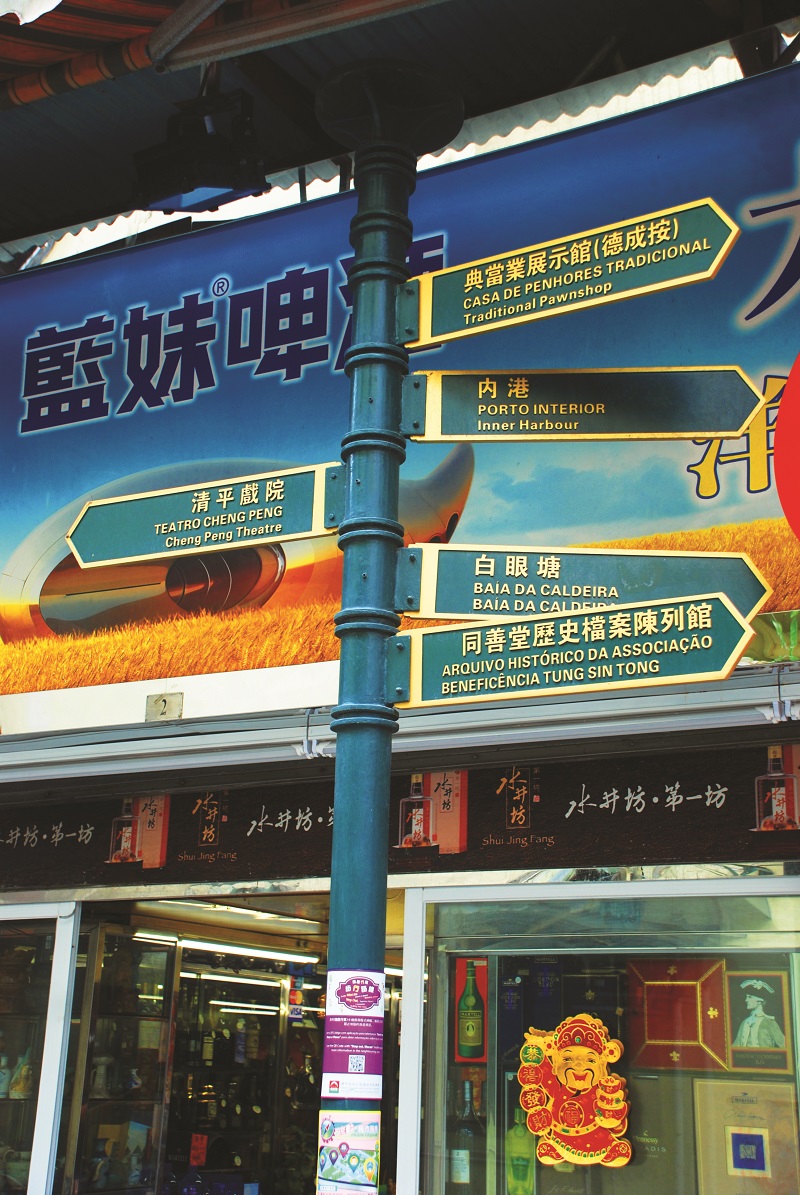This article first appeared in the Nov/Dec 2016 issue of WGM.
Macau’s reputation as an entertainment hub dates back much further than the liberalization of its gaming industry in 2002. Take a walk down to the western side of Avenida de Almeida Ribeiro and you’ll find a characteristic old street named “Fulong New Street”, or “Happy Street” by definition of its Portuguese name Rua da Felicidade.
More than 100 years ago, this area was Macau’s “red light district” and home to numerous brothels, gambling houses and opium parlors. Today, the 19th century buildings on each side of the street are consistent in style and the best preserved brothel architectural complex in China. It was here that Macau’s entertainment development really began.
Co-established by Wang Lu and his son
Fulong New Street is an eye-catching sign of the Fulong New Street area. The word “Fulong” is derived from the name of the Land God of this area. It was originally a low-key area, with a bay full of clear water that local residents used to do their laundry.
When the Macau Portuguese government began to plan reclamation in 1864, local Chinese businessman Wang Lu and his son Wang Di acquired the old site of a large tea shop once run by the local Jewish people.
Five years later, having devised a plan to invigorate the area by inviting other Chinese businessmen to come in, Wang Lu’s construction and real estate company was awarded the reclamation project by Governor of Macau António Sérgio de Sousa and alongside his son they built Fulong New Street, Furong Lane, Fulong New Lane and Qingping New Street while also expanding a number of older streets constituting the Fulong New Street area.
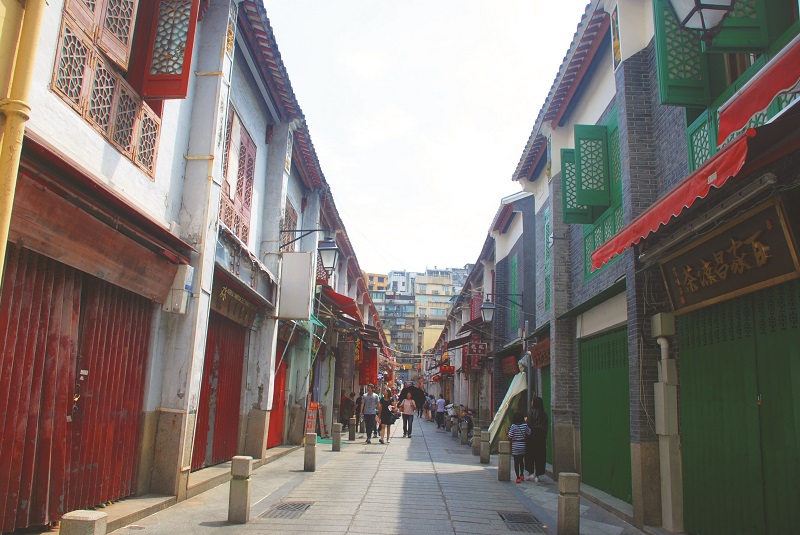
Fulong New Street formed the heart of the red light district over a hundred years ago
Unfortunately, their grand plan was slow to catch on and with 160 shops left empty, the other shareholders in the company cut their losses – leaving Wang Lu and his son as sole owners of most of the block.
It wasn’t until the establishment of Teatro Cheng Peng (Cheng Peng Theatre) that the area began to prosper.
The impact of Cantonese opera
Although the construction of the “Dom Pedro V Theatre” in 1860 gave Macau a western-style theater, there was still no fixed venue for Cantonese opera which had to be performed in a temporary tent. Governor Sousa felt this was a shame, so he granted a piece of land near the Fulong New Street area to Wang Lu and his son upon the condition that they construct a large theatre. As a result, in 1873 the earliest Chinese-style theatre in the Guangzhou, Hong Kong and Macau area was born.
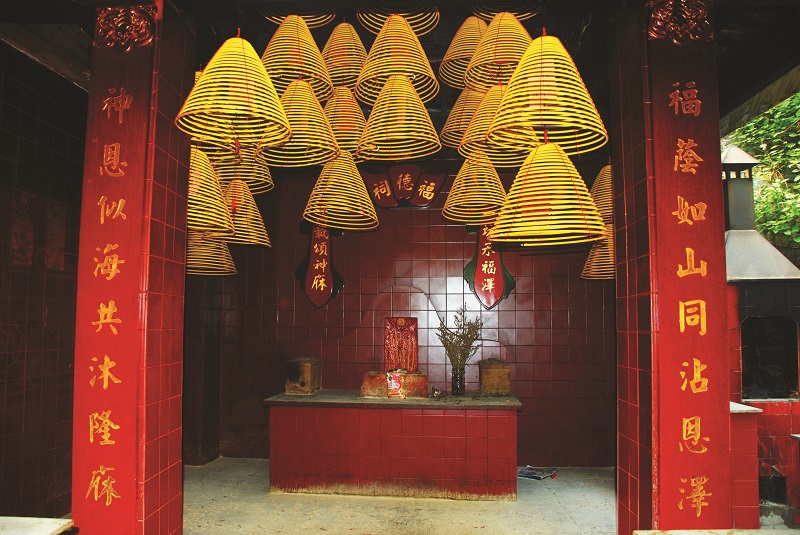
The name of Fulong New Street is derived from the name of the Land God of this area
Opening night was marked by a special performance from a then-famous theatrical troupe from Guangzhou, who were invited by Wang Di to celebrate his father’s 71st birthday, and the theater quickly became a vital centre of Cantonese opera.
Sensual pleasures gather in the streets
The new theatre hosted performances all through the night, which energized the Fulong New Street area and saw brothels, gambling houses, opium parlors and restaurants arrive one after another. Fulong New Street was divided into two sections. The south section was filled with a large number of brothels, while the north section housed the restaurants, gambling houses and opium parlors. Fulong New Street and the connected Furong Lane and Furong New Lane formed one area where top-flight brothels were concentrated.
Prostitution emerged as a legitimate business in Macau at the time and was an important source of revenue for Macau Portuguese business. In 1887, the government issued new regulations for the prostitution business in Macau, covering brothels, unlicensed prostitutes and brothel boats. They were all required to be licensed and any prostitute carrying a sexually transmitted disease was required to be treated in a hospital. Chinese prostitutes went to Kiang Wu Hospital, while foreign prostitutes went to Hospital de S Rafael.
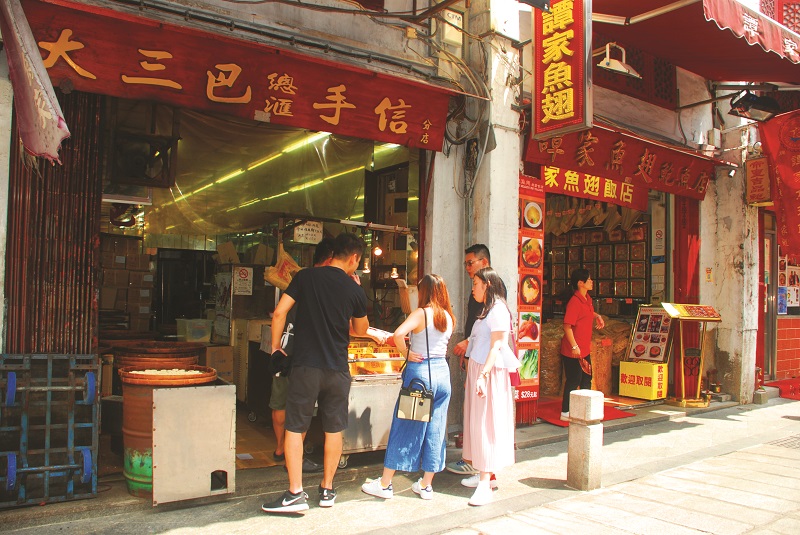
There are a number of well-known restaurants and souvenir shops in the area
When Hong Kong banned prostitution in 1932, Macau became an even more popular destination with the “three streets” area entering its heyday due to its close proximity to the terminal. At that time there were more than 100 brothels and thousands of prostitutes calling the area home.
Smoking opium in the tea house
There were also a large number of tea houses in the neighborhood, although the name may be slightly misleading. These were actually opium houses and although they did serve tea, the main job of the waitresses was to serve male customers smoking opium and provide an escort service if required.
There were once as many as 80 shops openly selling opium in Macau while the number of tea houses for opium consumption was over 50. Small tea houses had more than 10 opium beds while large ones had over 40.
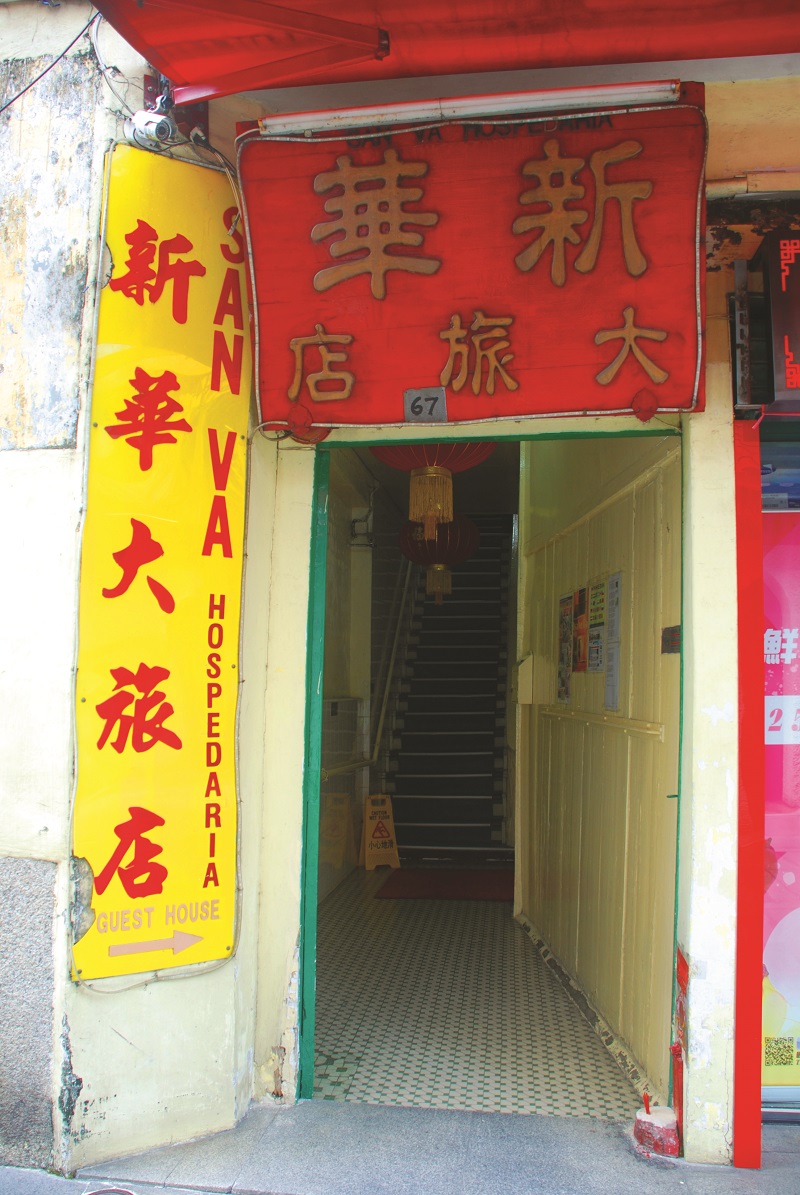
Although Macau earned a considerable amount of money from the opium trade, it also caused great harm to the physical and mental health of its people. In 1839, Qing Dynasty imperial envoy Lin Zexu inspected Macau after which he announced the prohibition of opium, ordered the expulsion of opium dealers and burned all the opium found. However, Opium wasn’t strictly prohibited until the founding of New China in 1946.
Transition to new color and new luck?
Long before the bright lights of modern day Macau, gambling houses formed a key component of the Fulong New Street area. Among the most famous was Yi’an Company. It was the first Chinese club set up in 1881 by one of Macau’s first generation of gambling kings, Lu Jiu, and imitated Western-style clubs. Members could partake in cards, dominoes, throwing championships, cock fighting and other gambling games. Due to the fame of the company and the fact that it was located in Fulong New Lane, the street was also known as Yi’an Street. In the 1940s Macau banned prostitution and drugs in quick succession, leaving only gambling as a legitimate business.
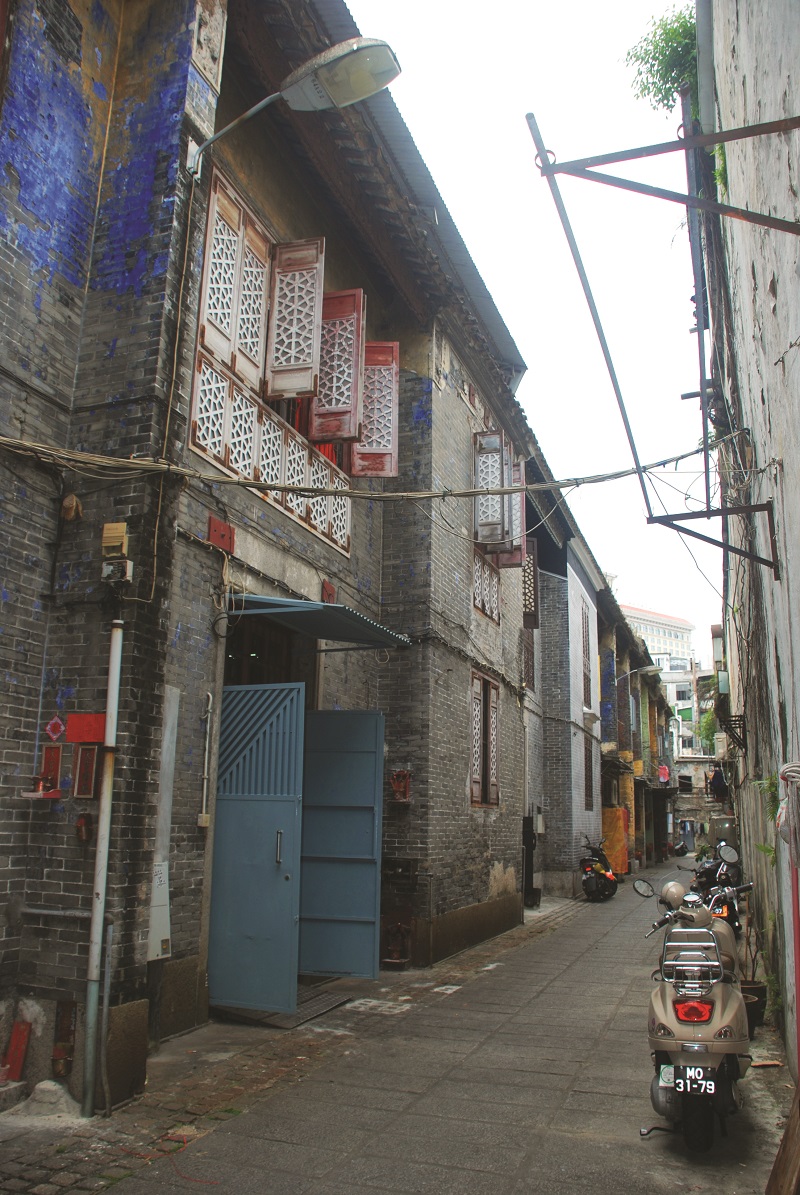
Brothels were everywhere in Furong Lane
Inevitably, the Fulong New Street area gradually declined in the years that followed. After Wang Lu and his son passed away, their descendants weren’t capable of maintaining their efforts and transferred possession of most of the property on the block to others. Brothels and tea houses were replaced by souvenir shops and time-honored eateries, forming a food street, but the degree of prosperity was less than before.
The main color of the Qing Dynasty buildings on both sides of the street also changed. They were painted different colors at different times, the original blue-gray replaced by white during the Chinese plague of the 19th century, then blue due to the influence of the Chinese Nationalist Party and green after the founding of the People’s Republic of China in 1949.
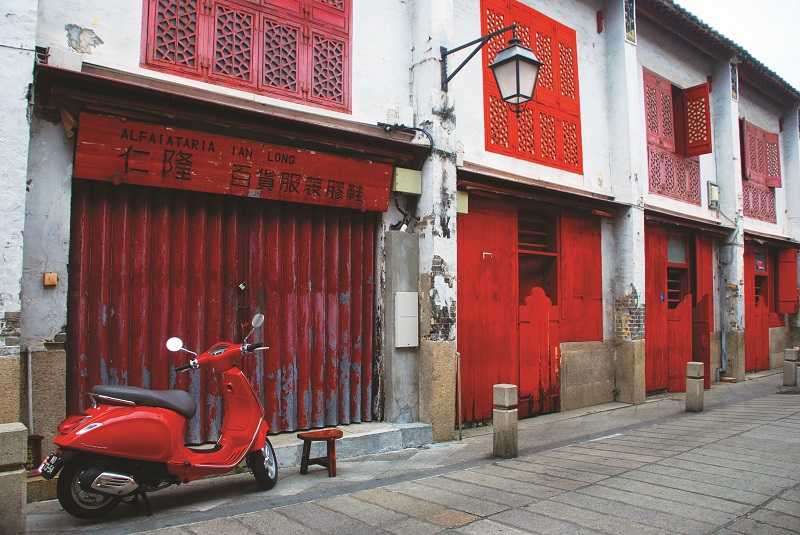
The doors and windows at Fulong New Street have been painted red for 20 years
In 1996, authorities painted the buildings red while Fulong New Street was being renovated to represent the erotic, gambling and opium industries of its former life. More recently the government decided to go back to green, but progress has been slow with the buildings now half green and half red. Some residents say the green looks like the color of mud crabs while the red is the color of steamed, dead crabs – negatively affecting the Feng Shui of the block.
Nevertheless, the significance of the area is reflected in further restoration works currently being performed on the theatre. In order to preserve its historical value and cultural functions, the government has already made structural fixes to the theatre which is now undergoing interior decoration.
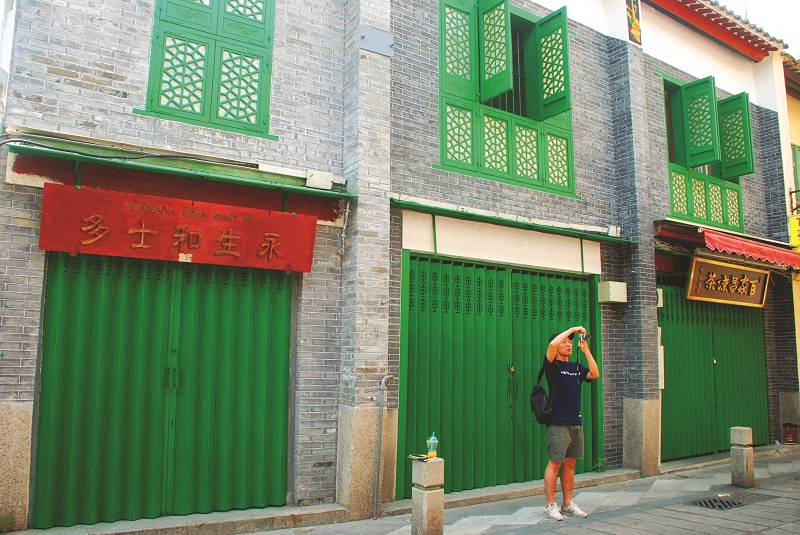
The ancient style brothel complex was restored to green after 1949
When it re-opens it will include a small Cantonese opera museum, cultural and creative space and performance practice room so that residents and visitors can learn the history of Cantonese opera.

